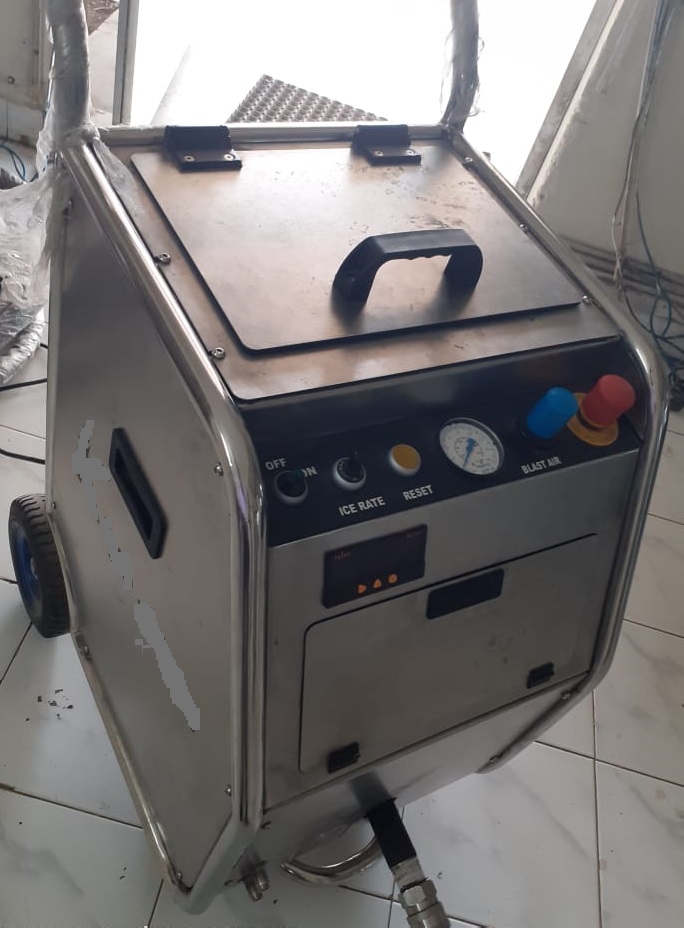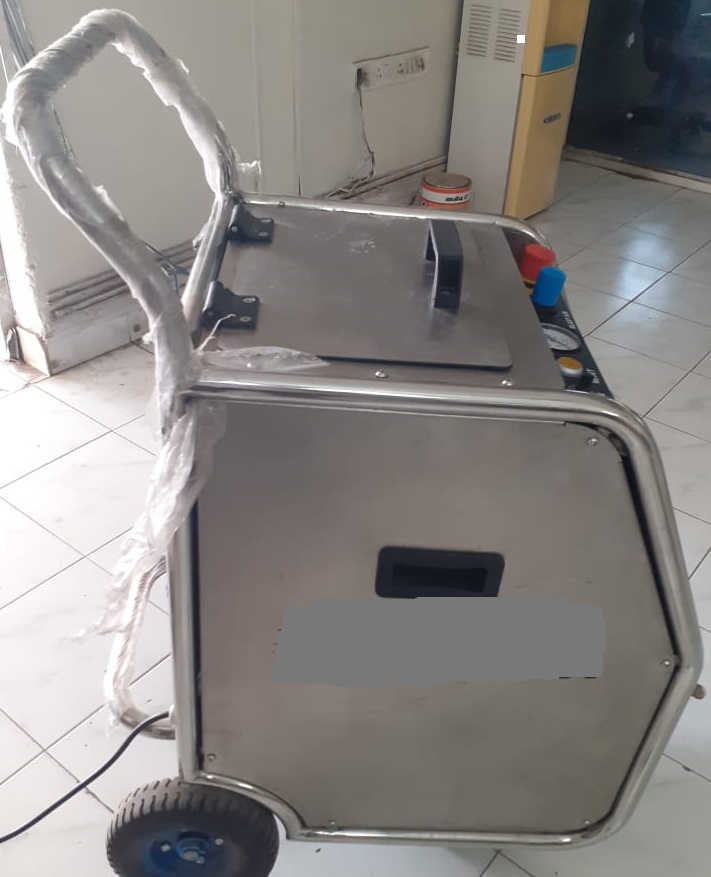Dry Ice Blasting
Dry Ice Blasting
Dry Ice blasting is a safe and effective way to clean both machinery and surfaces. By propelling Dry Ice pellets at high speeds, we provide ice blasting that is less dense than sand blasting but just as effective.
We offer a comprehensive product range of dry ice cleaning solutions. Our industry experience ranges from foundries to plastics, rubber to automotive, and everywhere in between.
Where can Dry Ice Blasting be applied?
Dry ice blasting basically removes all material which reacts strongly to differences in temperature. Paint, varnish, adhesive, oil, wax, residues in bakeries, bitumen, synthetic residues and foams (e.g. PU) etc. are removed easily without damaging or altering the surface. Even delicate parts like switch boards and other electric components can be cleaned gently. Dry Ice Blasting is virtually non-abrasive, this technology is especially highly recommended for gentle and effective cleaning of moulds of any type and material in all industries (e.g. ingot moulds, core boxes, injection moulds, high pressure die casting moulds, moulds for PU-products, waffle irons etc.).
Advantages over other cleaning methods
Gentle
Dry Ice Blasting is virtually non-abrasive. This means that in comparison to traditional blasting methods with sand or glass beads, the cleaned surfaces are not damaged or altered. So for example the edges of ingots moulds (especially in closing areas) will not be rounded out. Any arising of fins will therefore be avoided.
No dismantling
Dry Ice Blasting has the advantage that it can be applied directly to the moulds/plants without disassembling them. This saves you valuable time. Even hot moulds such as ingot moulds in foundries can be cleaned on-line. Dry Ice Blasting has minimal effect on mould temperature allowing virtually continuous production. This way Dry Ice Blasting can easily be applied regularly and integrated in the daily working process, thus supporting quality assurance and process reliability.
Dry
Dry Ice Blasting is a dry cleaning method. Therefore even delicate parts like switch boards and other electric components can be cleaned gently. Also in other industries where moisture would lead to problems (e.g. food industry) this cleaning method is applied regularly.
Important safety tips to follow when using dry ice blasting equipment for your cleaning needs:
- Use in a well-ventilated area
Adequate ventilation is key when using dry ice blasting. While the amount of CO2 in our normal air supply is 0.035%, carbon dioxide blasting can raise this amount if not performed in an area with proper ventilation. With good ventilation, CO2 levels during blast cleaning will not rise to dangerous levels. But if dry ice has been kept in a closed vehicle or room for more than 10 minutes, you need to air out the room by opening doors and windows before entering. Make sure that you and your blasting contractors provide additional ventilation for any projects and that everyone on site is well-versed in the potential hazards of CO2 exposure. - Wear protective gear
Dry ice is colder than we can fathom. At -109.3 degrees Fahrenheit, prolonged skin contact can result in a serious burn. Although brief contact is not likely to cause damage, you should always wear protective clothing like leather gloves and keep skin covered. - Store properly
You should store dry ice in a well-insulated container. Thicker insulation is better for slowing the rate of sublimation. However, this container should not be airtight. Storing CO2 in an airtight container could cause the container to expand or even explode. - Be careful where you put it down
Though dry ice blasting is great for removal of materials that you often find in kitchens and bathrooms, you don’t want to set it down on the floor or on the counter. Because of its extremely cold temperature, dry ice can easily crack tile floors and solid surface countertops. Although setting dry ice blasting equipment down on a tile floor won’t do any harm, just make sure the material isn’t absentmindedly placed there. - Know how to sublimate
When the project is done, dry ice needs to be disposed of in a specific way. It needs to be unwrapped (if applicable) and left at room temperature to sublimate into its gaseous form. It will then be absorbed into the atmosphere. It should be kept in a room where no one will mistakenly touch it — but make sure the room has proper ventilation. - Always supervise during use
Above all, everyone in the area must be properly supervised while dry ice blasting is occurring. Monitor yourself and those around you for signs of too much CO2. If someone has breathed in too much carbon dioxide, he or she may experience shortness of breath, dizziness, headache, or blue lips and fingernails. Make sure that no one directly touches the dry ice materials or operates machinery without proper training.

